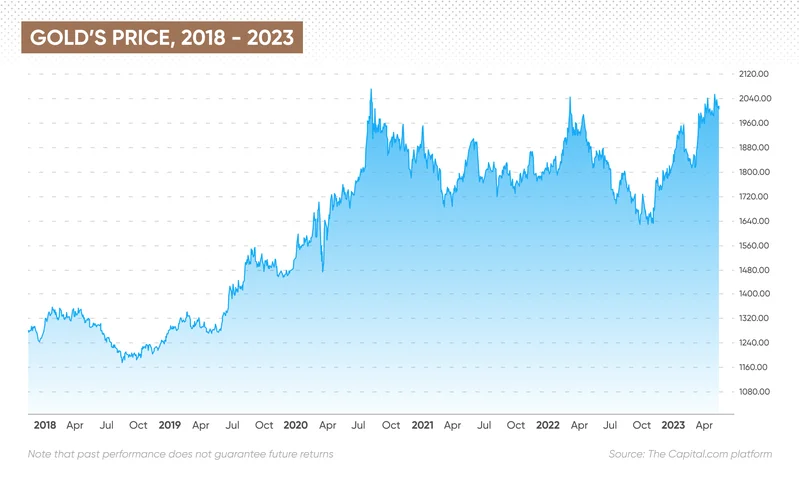Gold prices have breached the $4,000 per ounce threshold, a historic milestone that has financial news outlets buzzing with talk of a new bull market. The narrative is compelling: a safe-haven asset shining amidst global uncertainty, a hedge against persistent inflation, and a darling of central banks diversifying away from the U.S. dollar. The numbers are certainly dramatic. As of mid-September 2025, the `price of gold` sits around $3,652, a slight dip from recent highs but still representing a staggering $1,140 gain over the past year. That’s a climb of about 45%—to be more exact, a 45.3% increase from the $2,512 price point just 12 months prior.
This rally has been fueled by a textbook confluence of factors. Institutional demand is robust, with central banks in Asia and the Middle East continuing a multi-month buying spree, treating gold as a strategic reserve asset. Retail investors, spooked by an unsettled U.S. economy and a weaker dollar, have piled into gold-backed ETFs. Forecasts from major institutions like ING and Goldman Sachs are adding fuel to the fire, projecting averages of $4,150 and even $4,900, respectively, by 2026. On the surface, the logic appears sound. Gold is behaving precisely as it’s expected to in a climate of fear and monetary instability. But when you look past the headlines, the data reveals a far more precarious situation.
To understand the current `gold price today`, we have to dissect the forces driving it. The primary engine has been institutional accumulation. Central banks, particularly China’s, have been adding to their reserves for 18 consecutive months. This isn’t cyclical speculation; it’s a structural shift aimed at de-dollarization. This steady, price-insensitive buying creates a very high floor for the `gold spot price`. It acts as a buffer, absorbing dips and providing a baseline of demand that didn't exist with the same voracity a decade ago.
Simultaneously, the inflation narrative has taken hold. While gold’s record as a perfect inflation hedge is debatable (in strong economic climates, stocks have historically outperformed it significantly), perception is reality in markets. With inflation remaining stubbornly above target levels, investors are treating gold as financial insurance. This is classic risk-averse behavior. Gold isn’t being bought for its potential for explosive growth; it's being bought for its perceived ability to preserve value.

This brings us to the mechanics of the market itself. The difference between the bid price (what you get when you sell) and the ask price (what you pay to buy) is known as the spread. In the current environment, spreads are reportedly tight, indicating high liquidity and strong demand. It’s a seller’s market, and everyone wants in. But this is the part of the analysis that I find genuinely puzzling. When demand is this uniform and the bullish consensus is this strong, where is the counter-argument? Who is selling into this rally, and why? A market with only one side of the story is often a market on the verge of a correction.
While the narrative is one of unwavering strength, the underlying data suggests a market that is significantly overbought. A nearly 45% gain in a year for a major asset class is not sustainable growth; it's a parabolic move that invites volatility. Analysts are now cautiously whispering about a "healthy" correction, a pullback that could shave 10-15% off the `current gold price`, potentially sending it back toward the $3,500-$3,600 range. The triggers for such a correction are sitting in plain sight: a strengthening U.S. dollar, a resolution to geopolitical tensions, or a Federal Reserve that signals a more aggressive stance on interest rates than the market expects.
Let's put this rally into a broader historical context. From 1971 to 2024, stocks delivered average annual returns of 10.7%, while gold averaged 7.9%. Gold shines in periods of crisis, but over the long term, productive assets tend to win out. The current excitement feels less like a rational assessment of long-term value and more like a flight to safety that has overshot its mark. The market is behaving like a ship where everyone has rushed to one side, raising the center of gravity and making it vulnerable to the slightest wave. The central bank buying is acting like a massive keel, providing stability, but can it truly prevent the vessel from capsizing if a storm hits?
Furthermore, the volatility of other precious metals offers a cautionary tale. Silver, with its dual role as a monetary metal and an industrial component, is expected to be far more volatile. Its price is more sensitive to economic cycles. While the `silver price` of $41 an ounce seems stable for now, analysts suggest it could swing wildly. Platinum and palladium are in a similar boat. Gold’s relative stability is its key selling point, but at these price levels (a price-to-anything ratio that is historically stretched), that stability is being tested. Is gold still a safe harbor, or has it become the epicenter of the storm itself?
Let's be clear: the forces pushing gold higher are real. Central bank diversification is a multi-year structural trend, not a fleeting sentiment. But the retail and speculative frenzy layered on top of it has created a dangerous imbalance. The current `ounce of gold price` is not a reflection of fundamental value; it’s a reflection of peak fear. My analysis suggests that any piece of good news—a cooling of inflation, a stable geopolitical outlook—could prick this bubble. While institutional forecasts call for even higher prices, these projections often extrapolate recent trends. They are reactive, not predictive. The market is priced for a perfect storm of continued global chaos. Any deviation from that script, and the rush for the exits could be as swift and dramatic as the rush to get in. Gold isn’t an investment for the faint of heart right now; it’s a high-stakes wager on sustained pessimism.